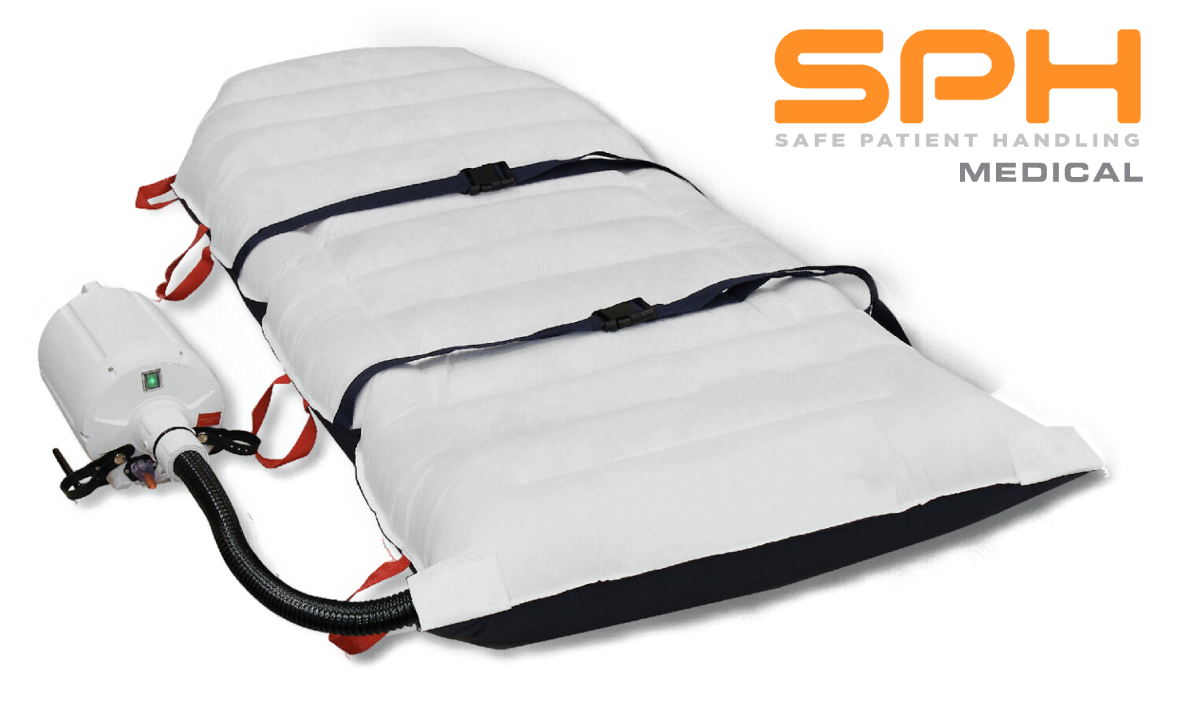How Patient Positioning and Lateral Transfers Increase Risk of Injury to our Nurses
Patient positioning in a hospital, surgery center, or medical clinic occurs twenty four hours a day and every day. Patients are constantly sliding down in bed and therefore need to be boosted back up, turned, bathed, and transferred. In this article we’re going to review one of the most common and predictable patient positioning tasks, a lateral transfer. Lateral transfers occur in many inpatient hospital units throughout the day. Whether patients are headed into surgery or to the imaging center, numerous departments oversee lateral transfers. In layman’s terms, a lateral transfer consists of transferring a patient from one surface to another. Unfortunately, the unpredictability of this procedure leaves a lot of room for error. As a result, both medical professionals and patients become susceptible to injuries. Specifically, hospital staff are at risk of MSDO’s due to the high frequency of this task and the increasing weight of patients. Lateral transfers have become so dangerous that more constructive alternatives are being developed.
In most cases, nurses perform lateral transfers by using the sheet that’s underneath the patient. If there aren’t enough hands on deck, a plastic board can help offset insufficient manpower. However, this method is far from flawless, and it doesn’t reduce enough friction to prevent a nursing injury or repositioning injury from occurring. Strains and sprains are commonplace but more serious career ending back injuries are occurring. Since a successful lateral transfer hinges entirely on physical effort and effective communication, these practices have been deemed high risk.
In fact, these techniques are so ineffective that medical professionals are over 30 percent more likely to experience musculoskeletal pain. According to the Bureau of Labor Statistics, Registered Nurses are the number one at risk profession for a back injury with an average of 7 lost work days per injury. Manual Patient Handling injuries are the primary culprits for this debilitating condition. While occupational injuries aren’t ideal for workers, they can be especially detrimental to hospitals. Not only do injuries leave their personnel indisposed, but these mishaps can also prove costly, requiring hospitals to pay hundreds of thousands of dollars to cover injury costs, and that’s just the direct cost of these injuries. d
In the hopes of addressing this ongoing issue, the Bureau of Labor Statistics held a study on safe patient handling programs. Their research showed that hospitals with proper lateral transfer procedures were 73 percent less likely to put their nurses or patients at risk. With this compelling evidence, the House made the noble decision to draft the Nurse and Health Care Worker Protection Act in 2015. At its core, this bill seeks to protect nurses from musculoskeletal disorders by requiring hospitals to reinforce their mobility, injury prevention, and patient handling standards.
The Future Of Safe Lateral Transfers
To combat the number of repositioning injuries, companies started introducing air-assisted transfer systems. AirPal is touted as the brains behind this invention and is renowned for being the first to design this revolutionary technology. With the efficacy of air-assisted transfer systems, companies like HoverMatt were eager to make this resource more accessible, leading to increased supply of the disposable or single patient use transfer mattress.
In essence, these systems reduce friction while offering unmatched safety for both the patient and the caregiver. As a result, they improve ergonomics, reduce risk of injury to nurses, and improve patient satisfaction and safety during lateral transfers. Thanks to the incredible ability to reduce friction for patients of all sizes, fewer people are needed to oversee lateral transfers. To ensure that patients and staff members remain out of harm’s way, SPH Medical implements air-assisted transfer systems in hospitals all across the country. SPH Medical is helping to make air assisted lateral transfer systems available to all hospitals at affordable prices.
Reasons To Choose Air-Assisted Transfer Equipment
Air-assisted transfer systems are highly sought-after for their ability to reduce handling injuries, but they offer more benefits than that. In addition to promoting safe practices, this cutting-edge equipment also instills comfort into the patient experience. In other words, patients aren’t as vulnerable to the unease and discomfort that accompanies traditional lateral transfers. With this modern equipment, transitioning a patient from point A to point B is seamless. This can improve hospital efficiencies and throughput further reducing costs.
According to patients, air-assisted transfer systems give the illusion and feeling that they’re floating from one surface to the next. What’s more, this streamlined process makes patients feel like less of an inconvenience. When caregivers have to exert tremendous energy to move a patient, it can trigger self-consciousness especially for the Bariatric patient. The dignity and care of Bariatric patients is an important consideration for hospitals across the country. In her book The Challenges of Caring for the Obese Patient, Sue Gallagher states, “Even the most compassionate caregiver may be reluctant to provide adequate care [to a patient with obesity] because of the threat of caregiver injury.” Fortunately, air-assisted equipment reduces self-doubt of caregivers and patients alike, bringing patients great peace of mind while allowing medical professionals to provide exceptional care.
References:
Gallagher S. The Challenges of Caring for the Obese Patient. Edgemont, PA: Matrix Medical Communications; 2005



